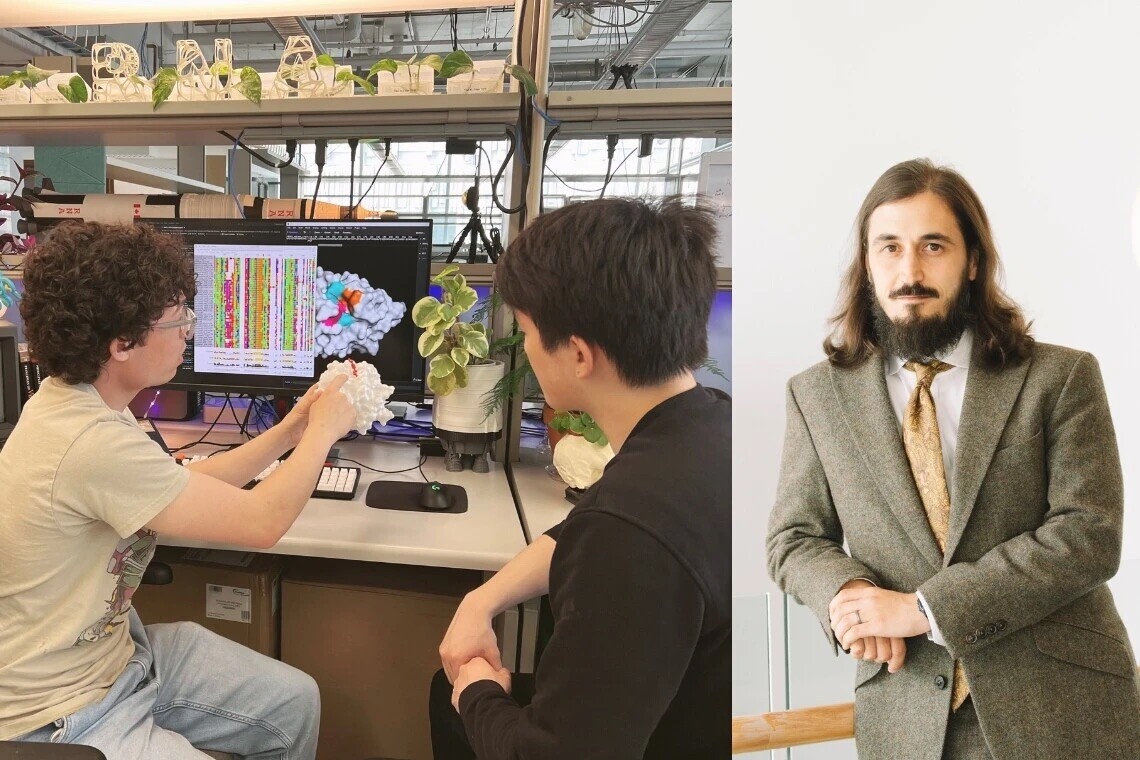Mobile Menu
- Education
- Research
-
Students
- High School Outreach
- Undergraduate & Beyond: Community of Support
- Current Students
- Faculty & Staff
- Alumni
- News & Events
- Giving
- About

The Donnelly Centre for Cellular and Biomolecular Research at the University of Toronto, in collaboration with Amazon Web Services (AWS), has launched the Cloud Research Lab (CRL) an initiative to equip Canadian biomedical researchers with cutting-edge cloud computing resources. By providing advanced computational power, the CRL will accelerate emerging and ongoing research projects to drive innovation in biomedical science.
The new lab will help position Canada as a global leader in computational research by offering capacity and training to support data-intensive research. It will also enable researchers to scale up their analyses using AWS’s cloud computing resources, which will enhance the breadth of data that can be analyzed and reduce processing time.
“Cloud computing is transforming research worldwide, and this latest investment by AWS ensures our students and faculty have the most advanced technology at their fingertips,” said Professor Stéphane Angers, director of the Donnelly Centre and Charles H. Best Chair in Medical Research. “The CRL will propel the Donnelly Centre forward as the nation’s leading research facility for computational biology and serve as a model for how strategic investment in cloud computing can accelerate discovery across the entire landscape of Canadian science. Our collaboration with Amazon Web Services enables us to push the boundaries of discovery while maximizing cost efficiency, ensuring Canadian-funded grants have an even greater impact.”
U of T consistently ranks among the world’s top institutions, recognized by Times Higher Education’s 2025 World University Rankings as one of the top 10 public universities and as one of the top 10 universities in the medical and health category.
The Donnelly Centre, established in 2005, plays a pivotal role in U of T’s biomedical research leadership by fostering cross-disciplinary collaboration and technological innovation.
The CRL was founded by Artem Babaian, who joined the Donnelly Centre as an assistant professor of Molecular Genetics in 2022 after he developed of Serratus, an open-science cloud computing platform that harnesses the power of AWS, which led to the discovery of more than 130,000 RNA viruses. The project analyzed 5.7 million publicly available biological samples — equivalent to 20 million gigabytes of data — in just 11 days. Serratus transformed researchers’ ability to identify genetic sequences of new RNA viruses, including coronaviruses.
The Serratus platform was also used in a study Babaian helped author that identified a new class of sub-viral biological entities, known as obelisks. Initially, the team spent months analyzing 100 human gut datasets to find two obelisk species. By comparison, when they used cloud-based technology, the researchers re-analyzed 7.2 million datasets in just three weeks — and uncovered more than 29,000 obelisk species.
AWS provides the CRL with powerful computing infrastructure to help researchers complete projects and report findings faster than ever before.
“Our mission at AWS is to democratize access to cloud and AI technology and ensure everyone can benefit from the wide breadth of services we offer,” said Coral Kennett, head of provincial government & education at AWS Canada. “We recognized an immediate need for access to computing services by Canadian researchers to be competitive on a global scale, and we will help fulfil this need.”
The CRL has already powered groundbreaking research, including the world’s largest database of assembled sequencing data, created by Babaian and Rayan Chikhi, researcher and group leader at the Institut Pasteur and Researcher at Centre national de la recherche scientifique.
With support from the CRL, the team transformed 100 petabytes of raw sequencing data from 27 million samples into a searchable 350-terabyte dataset. To accomplish this, the AWS batch process deployed up to 2.2 million CPUs over six days, and enabled millions of samples to be processed simultaneously. The resulting database substantially improves access to sequencing data and creates new opportunities for researchers to discover enzymes for medical applications.
The CRL also supports early-stage research with the potential to drive biomedical advancements. One of these projects, led by Philipp Maass, an assistant professor of Molecular Genetics at Temerty Medicine and scientist at SickKids Research Institute, leverages cloud computing to analyze 3D spatial genome organization in human cells. His team optimized high-performance computing workflows using AWS cloud architecture and reduced analysis time from 13 years to just 10 minutes.
Another project in the works is to develop and train deep learning models on large mass spectrometry datasets using the AWS Cloud. Hannes Röst, an associate professor of Molecular Genetics at the Donnelly Centre, does this work to improve methods to identify small molecules and advance their potential application in drug discovery, disease diagnosis and environmental science.
“Cloud computing is revolutionizing the way researchers are conducting science,” said Babaian. “Everyone working in the field of computational biology is aware that the volume of data we’re facing means we can’t continue performing data analysis the way we did five years ago. Cloud computing best practices have allowed the CRL to accelerate research at an unprecedented rate. I’m thrilled that my colleagues and I can now approach research in a way that saves us money and—more importantly—years in research time.”
The Cloud Research Lab is powered by Amazon Web Services and supported by the Canadian Institutes of Health Research.